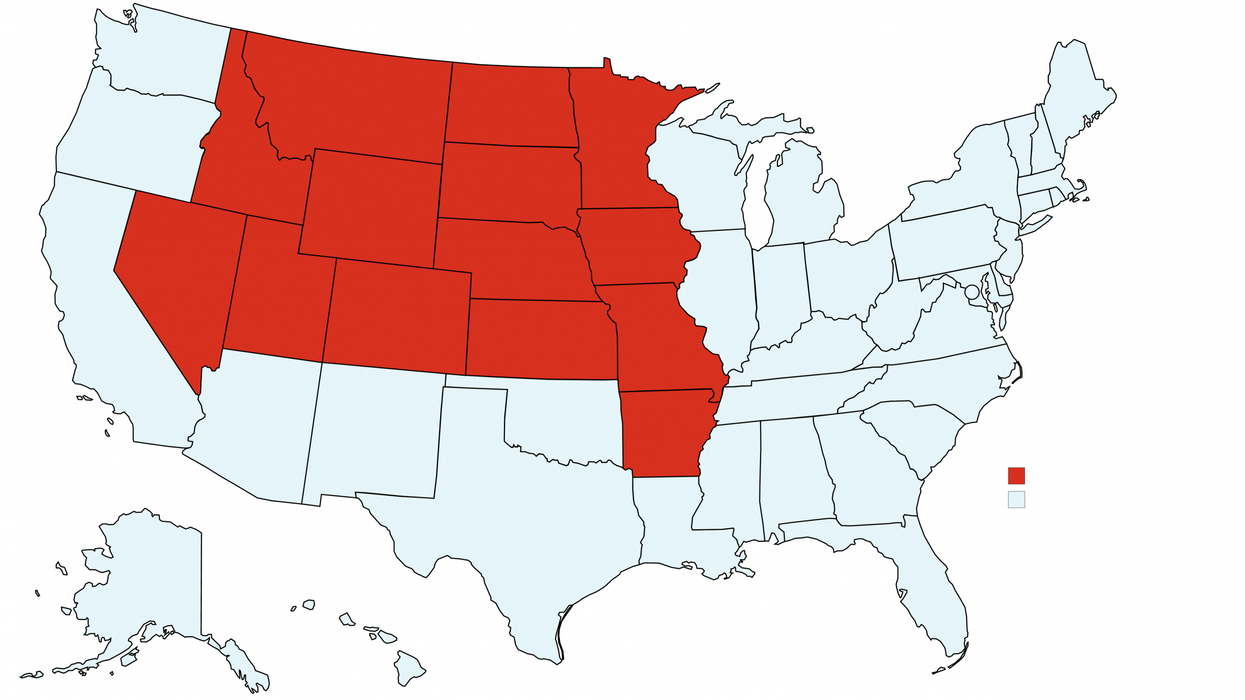Joanna Taylor
Oct 21, 2020

indy100 via MapChart
A map comparing the population density of different US states has sparked a conversation about the American voting system.
Citing census data from 2010, the map claims that 28 senators from 14 states represent fewer people than California's two senators.
https://t.co/bo6pQX8ReT— Ward Q. Normal (@Ward Q. Normal) 1603038114
@WardQNormal, who shared the map, followed it up with statistics that put into perspective how densely populated the US's east coast is.
The entire population of Wyoming (97,800 square miles) is less than that of San Francisco (47 square miles).— Ward Q. Normal (@Ward Q. Normal) 1603038975
All fifty US states elect two people to the Senate, regardless of how many people live in them. This practice was established in the first article of the US constitution in 1787.
Also established by this article with the aim of dividing up power proportionally was the House of Representatives. How many people from each state sit in this house (which forms the lower house of Congress – the Senate is the upper) is decided by census data.
2010 census data resulted in California having 53 representatives; seven states, including Delaware, Vermont and Wyoming, only have one. United States censuses are taken every decade: new data is imminent, but its release has been slowed by the coronavirus pandemic.
But some people think that even the House of Representatives's model is out of date.
Largest district: 990,000 (MT) Smallest district: 530,000 (RI 1st) This isn't (just) about California. Our count… https://t.co/WP6fgJKxJF— Ward Q. Normal (@Ward Q. Normal) 1603047897
Tell me again about our “representative” democracy? https://t.co/7XTJZcLJ98— Drug Monkey (@Drug Monkey) 1603061209
@WardQNormal @ElsaOrgana This drives me crazy. But the forefathers did it to protect smaller states like Rhode Isla… https://t.co/zKWFxEdYOq— 💛 Ed '#KaliStrong, #CancerSucks' Tufexis 💛 (@💛 Ed '#KaliStrong, #CancerSucks' Tufexis 💛) 1603063415
The total number of representatives is capped, meaning that some states might still end up with a smaller representation to population ratio than others.
Another controversial element of the US voting system is the Electoral College.
A great argument to end the Electoral College. https://t.co/GyGKeUhnSt— KiKiCox (she/her) 🇺🇲 🏳️🌈 BLM (@KiKiCox (she/her) 🇺🇲 🏳️🌈 BLM) 1603072640
Which is why we should abolish the Electoral College AND THE SENATE. https://t.co/F0v184V0Tl— Kelli Jae Baeli©BestsellingGenreHoppingIndieAuthor (@Kelli Jae Baeli©BestsellingGenreHoppingIndieAuthor) 1603071632
@WardQNormal @cameron_kasky Which is why the Electoral College must be abolished!— Susan Longosky (@Susan Longosky) 1603045429
The Electoral College forms every four years to elect a new president and vice president.
Under this system, in which each state establishes its electors in slightly variant ways, sparsely populated states have a slightly higher proportion of voting power than those in densely populated states. The system's workings also means that a presidential candidate can win the popular vote – i.e. more people can cast their vote in their favour – but lose the election.
This happened to Hillary Clinton in 2016 and Al Gore in 2000, who lost the election to George Bush.
Criticisms of the Electoral College and US voting system recur every election cycle. But despite protestations that it's unfair, they've remained (more or less) in tact for over three centuries.
Top 100
The Conversation (0)













